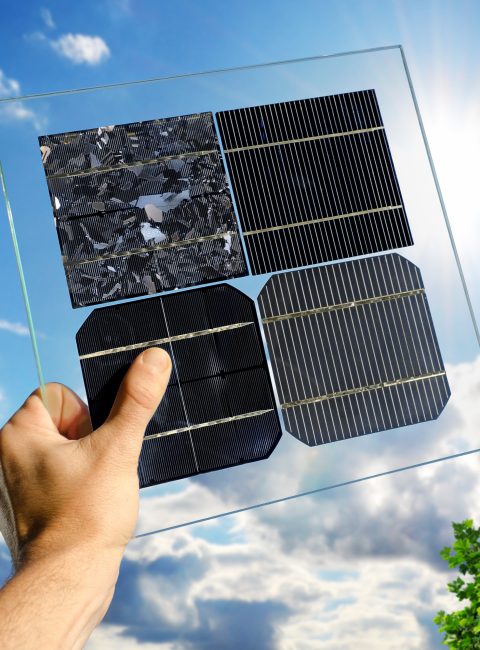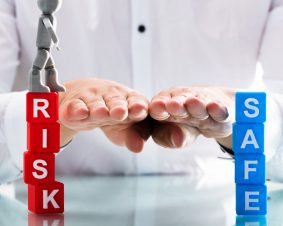 >
Spotlight March 2023: How can photovoltaics be made safe and sustainable?
>
Spotlight March 2023: How can photovoltaics be made safe and sustainable?
Conventional photovoltaic systems often have only low efficiency, i.e. only a fraction of the solar energy is converted into electrical energy and made usable. For this reason, research is being conducted into innovative materials that can significantly increase the energy yield and thus also enable more electrical energy to be generated from renewable sources. However, most of these materials contain toxic heavy metals, such as lead perovskite materials (material text perovskites) or lead quantum dots.
The review article addresses the question of how these novel photovoltaic materials can be made more sustainable in the future (basic text sustainability). For this purpose, in addition to the release scenarios of lead from solar cells due to environmental influences, their toxicity for humans and the environment is also considered, and avoidance strategies are shown that can effectively prevent the release of lead. These consist, for example, of reducing the lead content in photovoltaic modules or replacing lead with other, less critical elements (e.g. tin). There is also the possibility of coating solar cells or encapsulating the lead-containing components and thus protecting them from the effects of wind, rain and heat. Additives can also be used for stabilization (e.g. fullerenes). This can effectively prevent the release of lead into the environment.
Finally, recycling processes are summarized that allow the lead to be recovered and reused in new products. These processes can have tremendous environmental and economic benefits, as the release of lead into the environment from waste is prevented, and the reuse of the lead for new products is sustainable in the circular economy sense. It is clear at this point that many of the recycling processes presented rely on the use of large amounts of various solvents, which is also critical. The authors state that more research is needed for effective and sustainable recycling and suggest that recycling costs should be included for an economic consideration of lead-containing solar materials.
This article provides a comprehensive review of how higher efficiency ,but with critical heavy metals, solar materials needed for the energy transition could be made more sustainable, and the authors outline future research is needed on these materials, which are still in development.
Original-Publication:
Xingwen Lu, Dong Yan, Jiangtao Feng, Meng Li, Bo Hou, Zhe Li, Fei Wang
Ecotoxicity and Sustainability of Emerging Pb-Based Photovoltaics. Sol. RRL 2022, 6, 2200699

Weitere Spotlights
Spotlight March 2021: Is Nanotechnology the Swiss Army Knife against Future Pandemics?
The COVID 19 outbreak has led to a fundamental rethinking of existing approaches to diagnosis, treatment, and prevention methods. The need for better and more efficient concepts is global and urgent. Nanotechnology has long been at the forefront of innovation and has led to advances in many different disciplines. Could this interdisciplinary field help develop […]
Read moreSpotlight October 2022: The titanium dioxide debate – why the current ECHA and EFSA hazard classification should be questioned
Due to various reports and scientific studies, titanium dioxide (TiO2)was also banned in Europe this year (2022) for use as a food additive with the indication that it could possibly be carcinogenic to humans. Although no case of tumour induction in humans has been reported since the use of this material in micro but also […]
Read moreSpotlight June 2023: New catalytic process for recovering important materials from composites in a single process
Previously virtually impossible and a huge problem: fibre-reinforced resin composites (epoxides) were not recyclable, and wind turbine rotor blades, for example, add up to a waste pile of 43 million tons by 2050. Researchers have now taken an important first step in “reprocessing” these composites and catalytically dissolving them so that the carbon fibres and […]
Read moreSpotlight November 2023: Early Awareness and Action System for Advanced Materials (Early4AdMa)
Advanced materials hold immense potential to address global challenges such as environmental degradation, transformation of the energy sector, and development towards circularity. To harness their benefits while ensuring safety and sustainability, regulatory bodies, scientific communities, and industries have recognized the need for proactive approaches. The “Early4AdMa” system is a pre-regulatory risk governance tool for advanced […]
Read more


